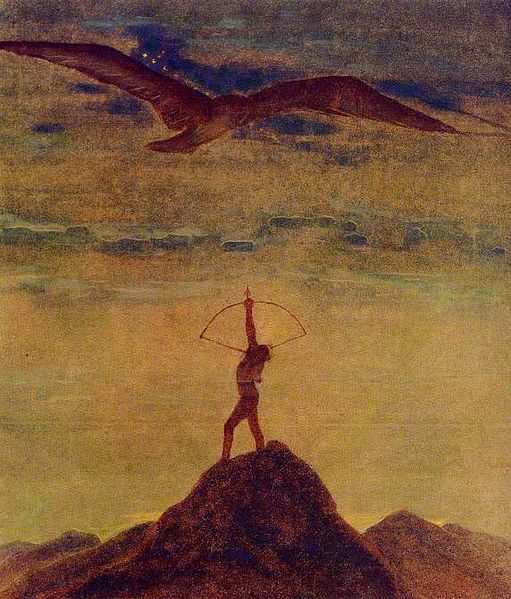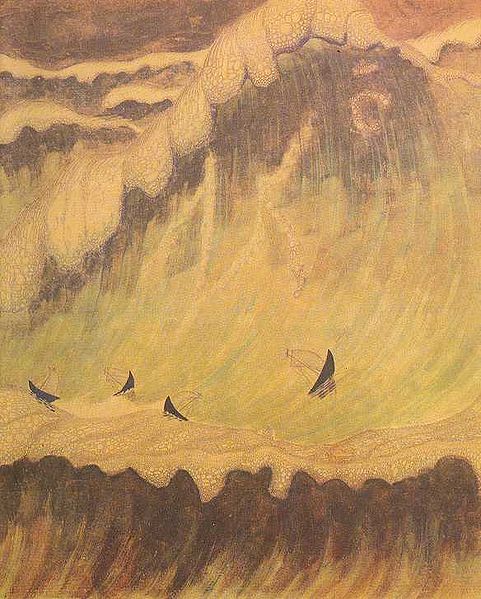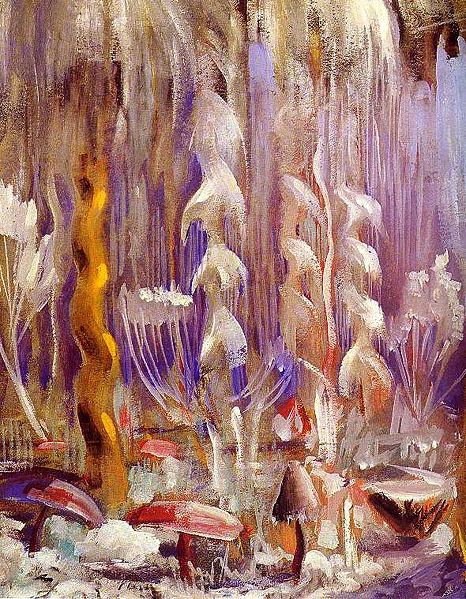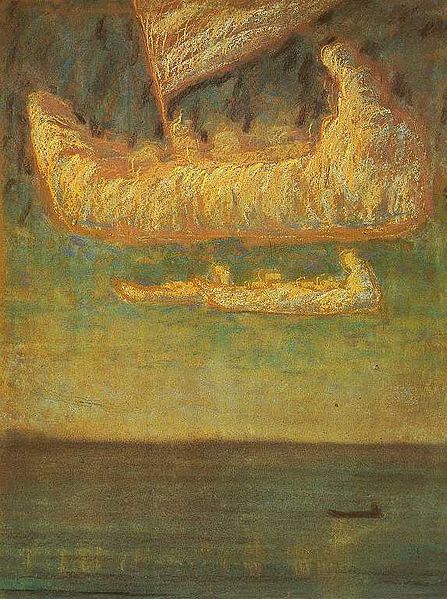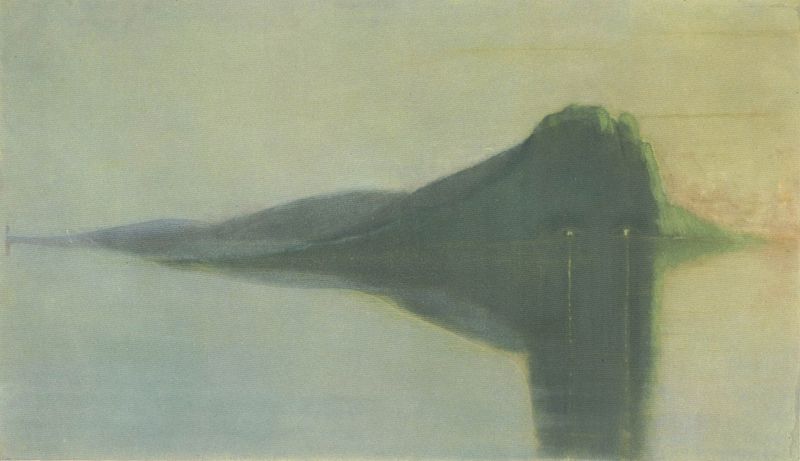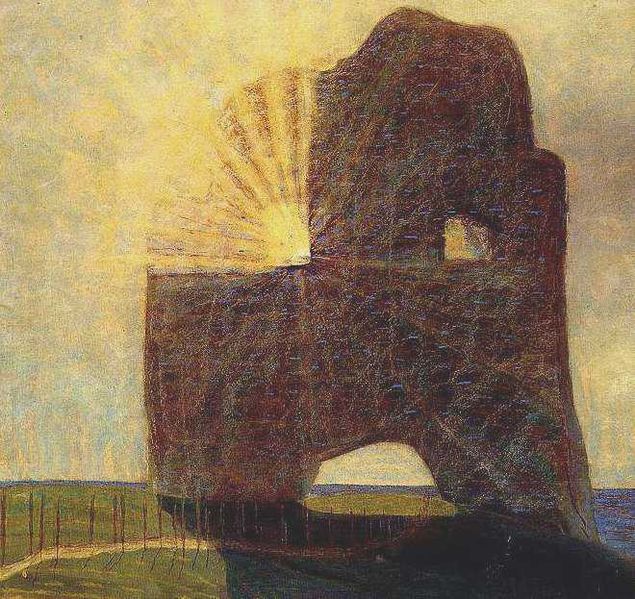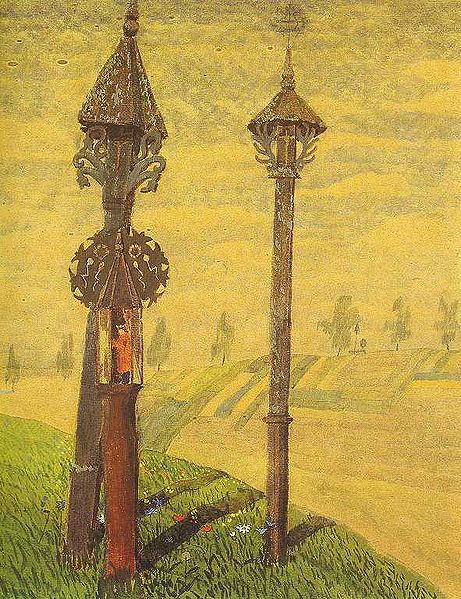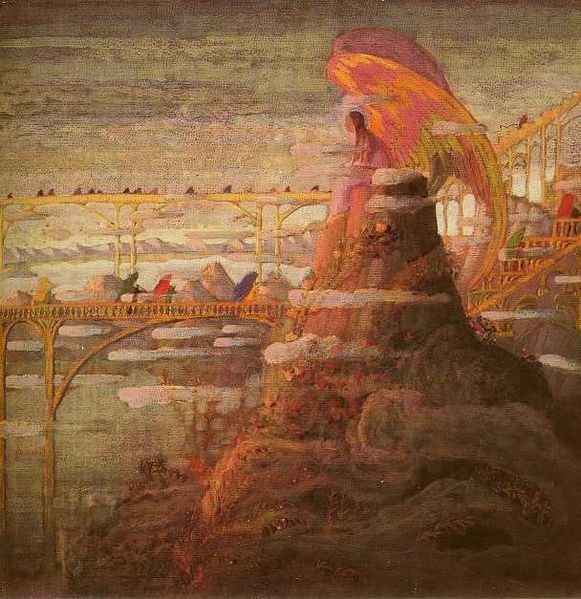<Back to Index>
- Painter Mikalojus Konstantinas Čiurlionis, 1875
PAGE SPONSOR
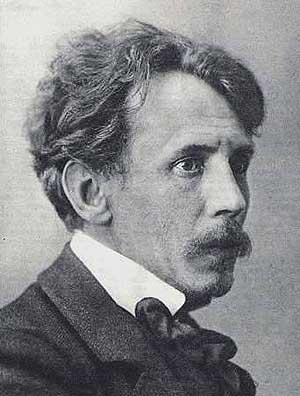
Mikalojus Konstantinas Čiurlionis (Polish 'Mikołaj Konstanty Czurlanis'), also known as M.K. Čiurlionis (22 September [O.S. 10 September] 1875 –10 April [O.S. 28 March] 1911) was a Lithuanian painter and composer. Čiurlionis contributed to symbolism and art nouveau and was representative of the fin de siècle epoch. During his short life he composed about 250 pieces of music and created about 300 paintings. The majority of his paintings are housed in the M.K. Čiurlionis National Art Museum in Kaunas, Lithuania. His works have had a profound influence on modern Lithuanian culture. The asteroid 2420 Čiurlionis is named after him.
Mikalojus Konstantinas Čiurlionis was born in Senoji Varėna, the oldest of nine children of his father, Konstantinas, and his mother, Adelė. Like many educated Lithuanians of the time, Čiurlionis's family spoke Polish, and he became fluent in Lithuanian only after meeting his fiancée. In 1878 his family moved to Druskininkai, where his father went on to be the town organist. Čiurlionis was a musical prodigy: he could play by ear at age three and could sight - read music freely by age seven. Three years out of primary school, he went to study at the musical school of Prince Michał Ogiński where he learned to play several orchestral instruments, in particular the flute, from 1889 to 1893. Supported by Prince Ogiński's 'scholarship' Čiurlionis studied piano and composition at the Warsaw Conservatory from 1894 to 1899. For his graduation, in 1899, he wrote a cantata for mixed chorus and symphonic orchestra titled De Profundis, with the guidance of the composer Zygmunt Noskowski. Later he attended composition lectures at the Leipzig Conservatory (1901 to 1902), and studied drawing at the Warsaw School of Fine Arts from 1904 to 1906 and became a friend of Polish composer and painter Eugeniusz Morawski - Dąbrowa. After the 1905 Russian Revolution, which resulted in the loosening of cultural restrictions on the Empire's minorities, he began to identify himself as a Lithuanian.
He was one of the initiators of, and a participant in, the First Exhibition of Lithuanian Art that took place in 1907 in Vileišis Palace, Vilnius. Soon after this event the Lithuanian Union of Arts was founded, and Čiurlionis was one of its 19 founding members.
In 1907 he became acquainted with Sofija Kymantaitė (1886 – 1958), an art critic. Through this association Čiurlionis learned to speak better Lithuanian. Early in 1909 he married Sofija. At the end of that year he traveled to St. Petersburg, where he exhibited some of his paintings. On Christmas Eve Čiurlionis fell into a profound depression and at the beginning of 1910 was hospitalized in a sanatorium called „Czerwony Dwór" (Red Manor) in Pustelnik (now Marki), northeast of Warsaw. While a patient there he died of pneumonia in 1911 at 35 years of age. He was buried at the Rasos Cemetery in Vilnius. He never saw his daughter Danutė (1910 – 1995).
Čiurlionis felt that he was a synesthete; that is, he perceived colors and music simultaneously. Many of his paintings bear the names of musical pieces: sonatas, fugues and preludes.
In 1911 the first posthumous exhibition of Mikalojus Konstantinas Čiurlionis's art was held in Vilnius and Kaunas. During the same year an exhibition of his art was held in Moscow, and in 1912 his works were exhibited in St. Petersburg. The National M.K. Čiurlionis School of Art was founded in Vilnius in 1945; soon afterwards the Lithuanian community in Chicago opened the Čiurlionis Art Gallery, hosting collections of his works. In 1963 the Čiurlionis Memorial Museum was opened in Druskininkai, in the house where Čiurlionis and his family lived. This museum holds biographical documents as well as photographs and reproductions of the artist's works.
Čiurlionis inspired the Lithuanian composer Osvaldas Balakauskas' work Sonata of the Mountains (1975), and every four years junior musical performers from Lithuania and neighboring countries take part in the Čiurlionis Competition. Čiurlionis's name has been given to cliffs in Franz Josef Land, a peak in the Pamir Mountains, and to asteroid #2420, discovered by the Crimean astrophysicist Nikolaj Cernych.
Čiurlionis's
works have been displayed at international exhibitions in Japan,
Germany, Spain and elsewhere. His paintings were featured at "Visual
Music" fest, an homage to synesthesia that included the works of Wassily Kandinsky, James McNeill Whistler and Paul Klee, at the Museum of Contemporary Art, Los Angeles in 2005.
